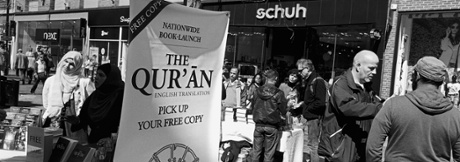
This book somehow slipped under my radar when it was published a few months ago, but it is worth seeking out for several reasons. The first is that, as its title suggests, it looks, quietly and attentively, at an England in flux, but not in the way that we might have expected following a year in which the question of England – and Scotland, and the United Kingdom – suddenly became beset with panic. Instead, John Comino-James’s focus is wider, more reflective and underpinned by his own journey, his own shifting sense of Englishness.
The afterword to the photographs is called A Question of England, A Question of Home. It is also a book, then, about belonging, identity and roots, both personal and communal. In this, it has some similarities with other photobooks that explore comparable subject matter: We English by Simon Roberts, say, or, more elliptically, Something Like a Nest by Andy Sewell. But Comino-James’s approach is, for want of a better term, more generationally defined. Born in Somerset in 1943, he has lived though a time in which Englishness has gone from being a fixed idea to an often uncertain, even riven one.
He describes the book as “a gentle visual exploration of how our everyday landscape has changed when compared with that internalised sense of England which was already being formed as I stood as a 10-year-old to be photographed under the flags put up for the coronation in 1953”. Often, it is as if he has tried to look at contemporary England though the curious eyes of his 10-year-old self – had that young boy somehow been transported through time to the present. What emerges is an England of contradictions, both an increasingly corporate place and one that seems too anarchic in a downbeat way to be fully homogenised by commerce.
In black and white, which, one senses, is central to his own photographic sense of home, Comino-James roams freely and democratically though a land his 10-year-old self would have barely recognised. It abounds with brand names and outlets – Aldi, DFS, Leatherland – as well as small shops that seem both timeless and out of time – Brewers: For Decorating Materials, Broomfield’s House Clearance, Bouton’s Bra’s (sic) and Babies. In one central section, a composite street unfolds shop by shop: Oceans of Knowledge, an Islamic bookshop, next to Love Care, a sex shop, next to Pegasus Motorcycles, and so on. Throughout, the traces of the monoculture that Comino-James grew up in are still detectable amid the multiculturalism of contemporary England.
This England is, above all, a maze of signs and symbols – Woodlands for Sale, Repatriation Parking, Art in Action Ahead, Samaritans – and the book makes you look again at the everyday overload of non-digital information that is out there as you walk along a street or though a city centre. Yet there is something definably English about the jumble of signifiers that seems to suggest the country is fragmenting. If the idea of England is currently a fraught one and the looming presence of the little Englander is palpable once again, A Question of England offers a glimpse of another England, where the everyday urban landscape has been altered dramatically in the past 70 years, but the people are simply getting on with their lives in an increasingly homogenised, but still makeshift, world. In that sense, the real English question reflects the bigger one: where do we find meaning – cultural, personal, communal – in the age of global capital?

